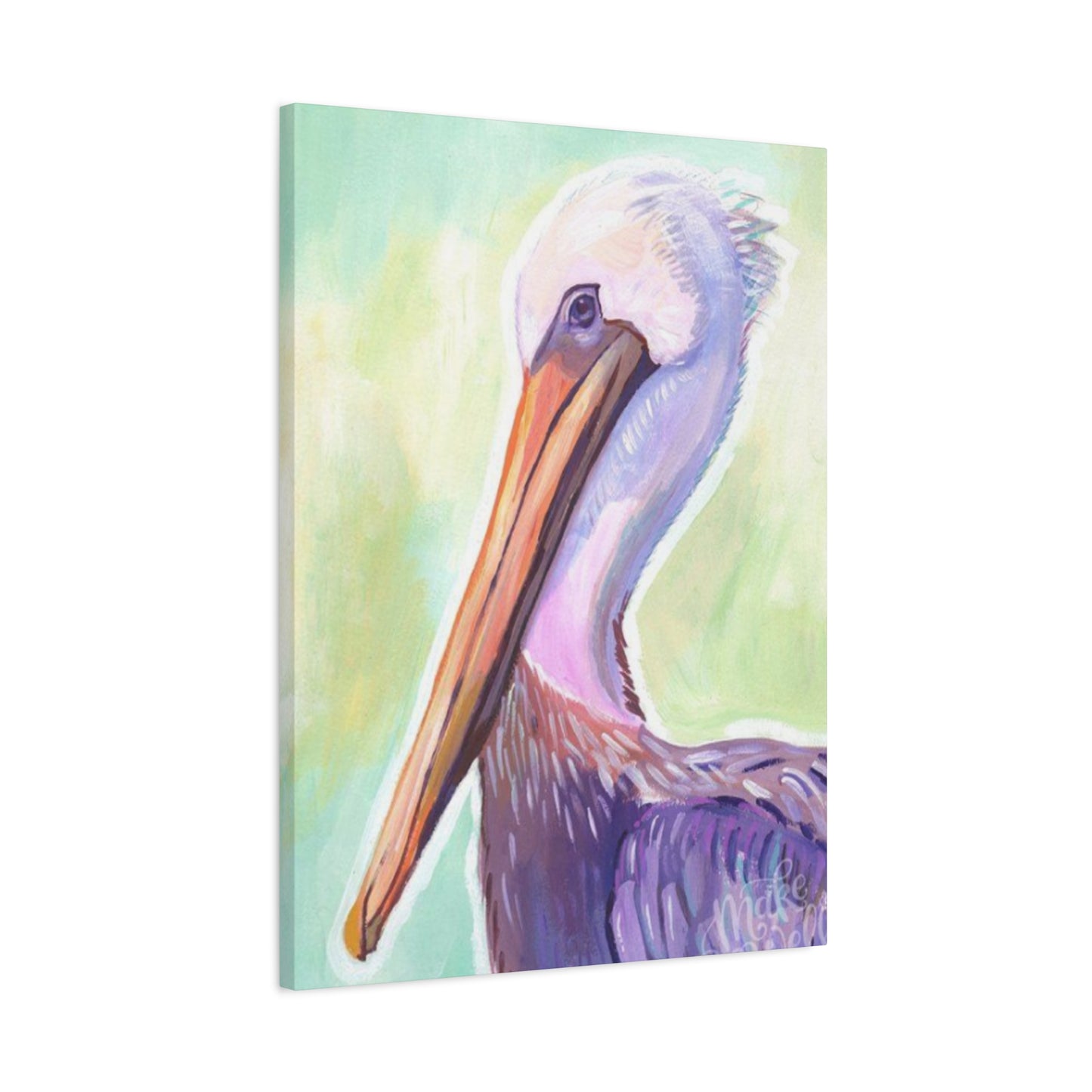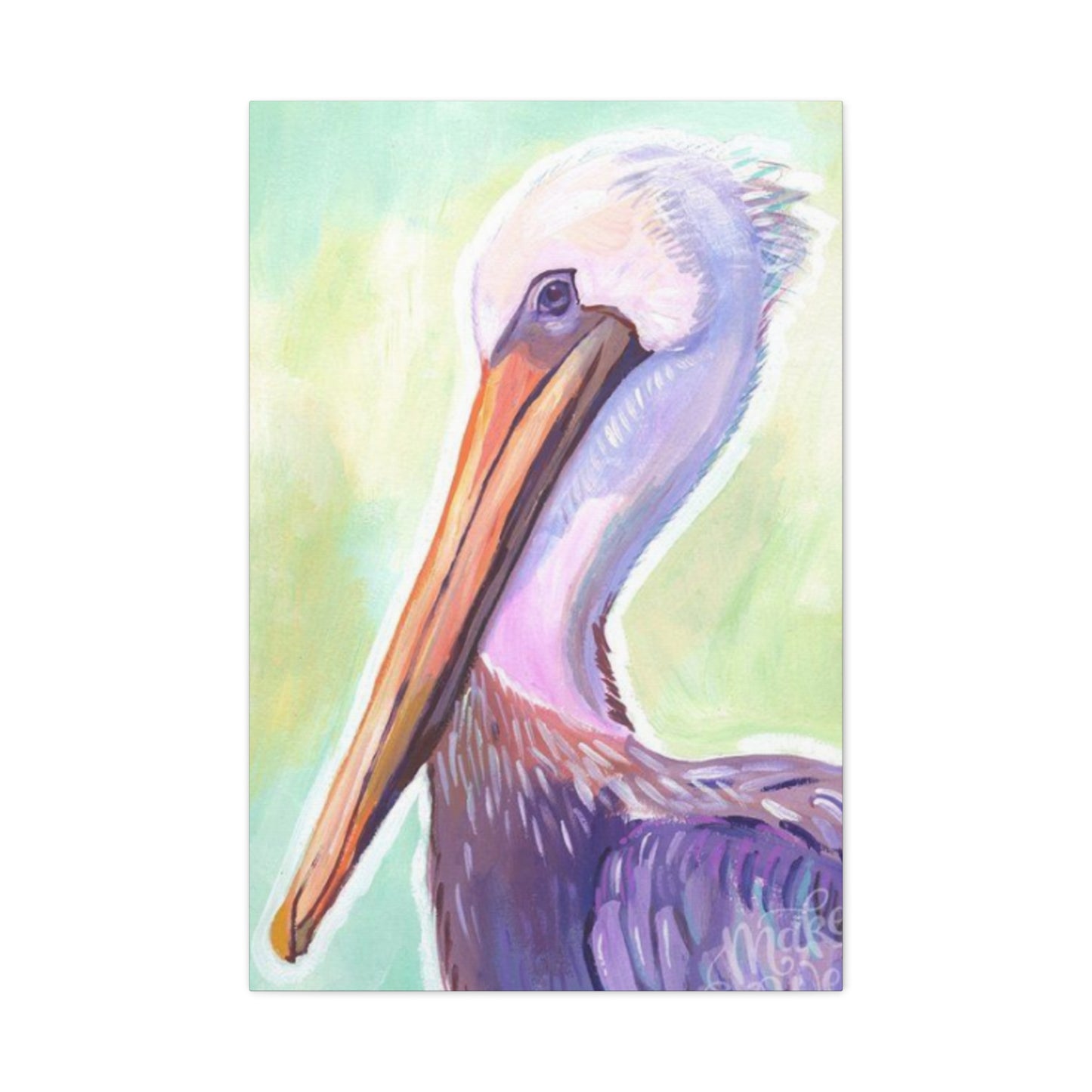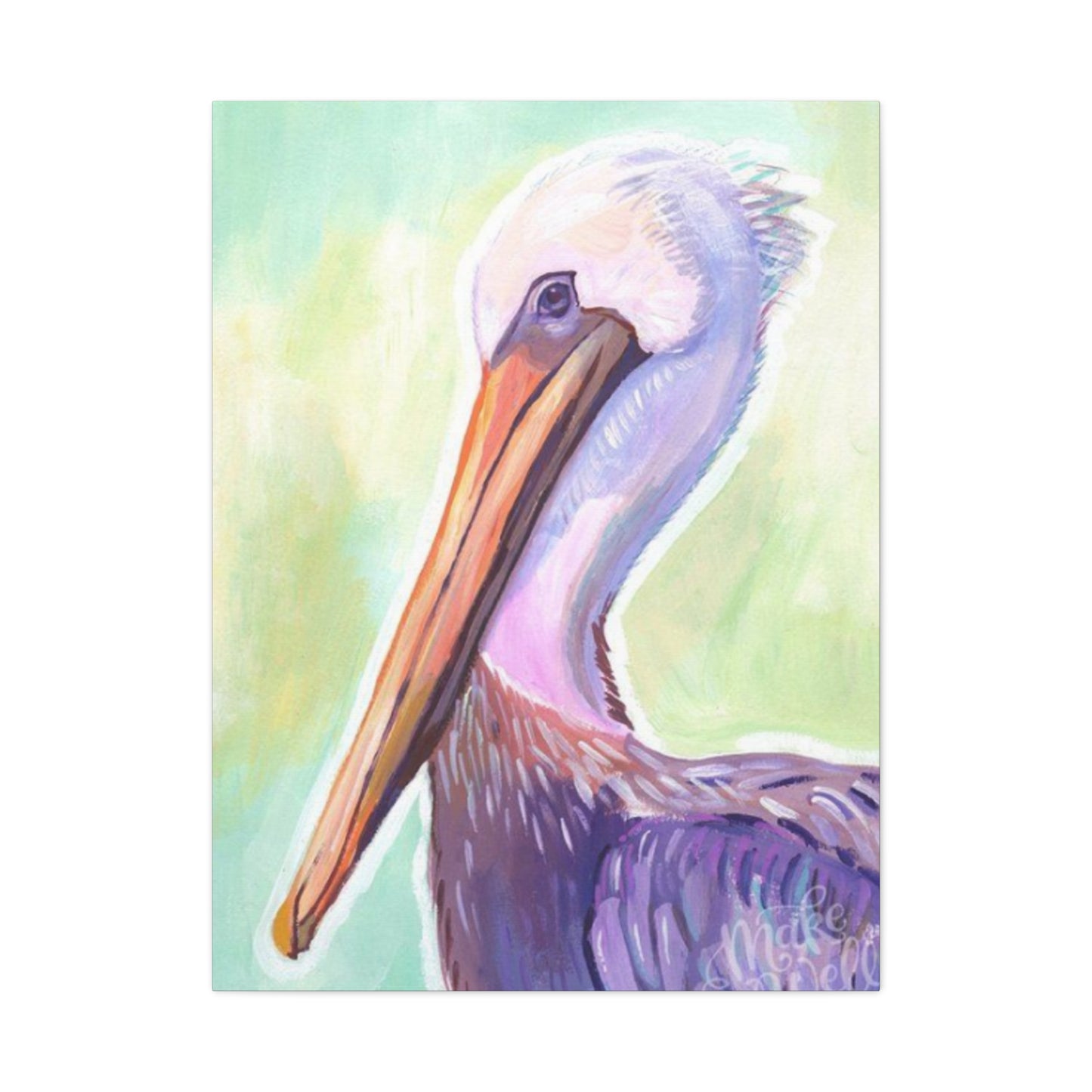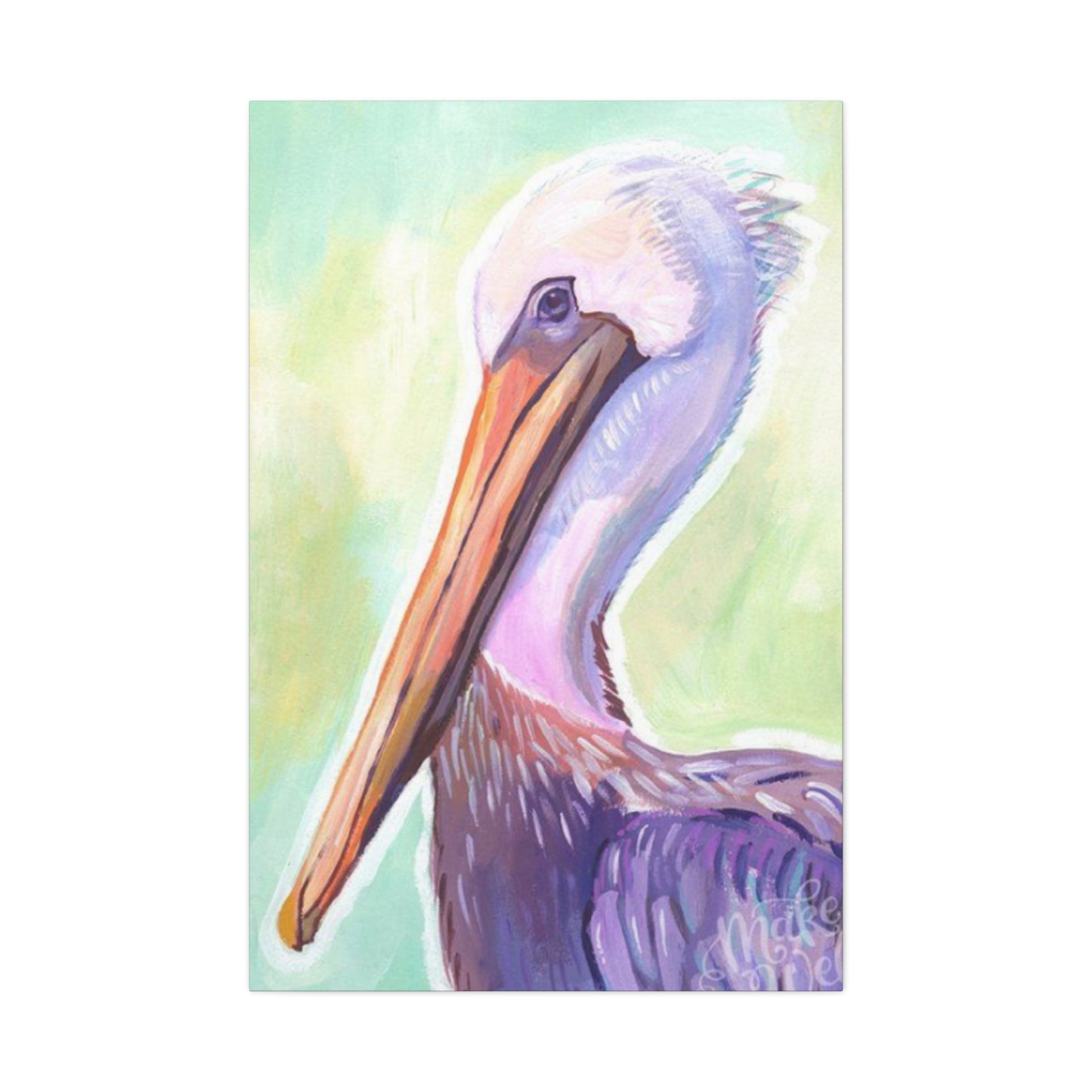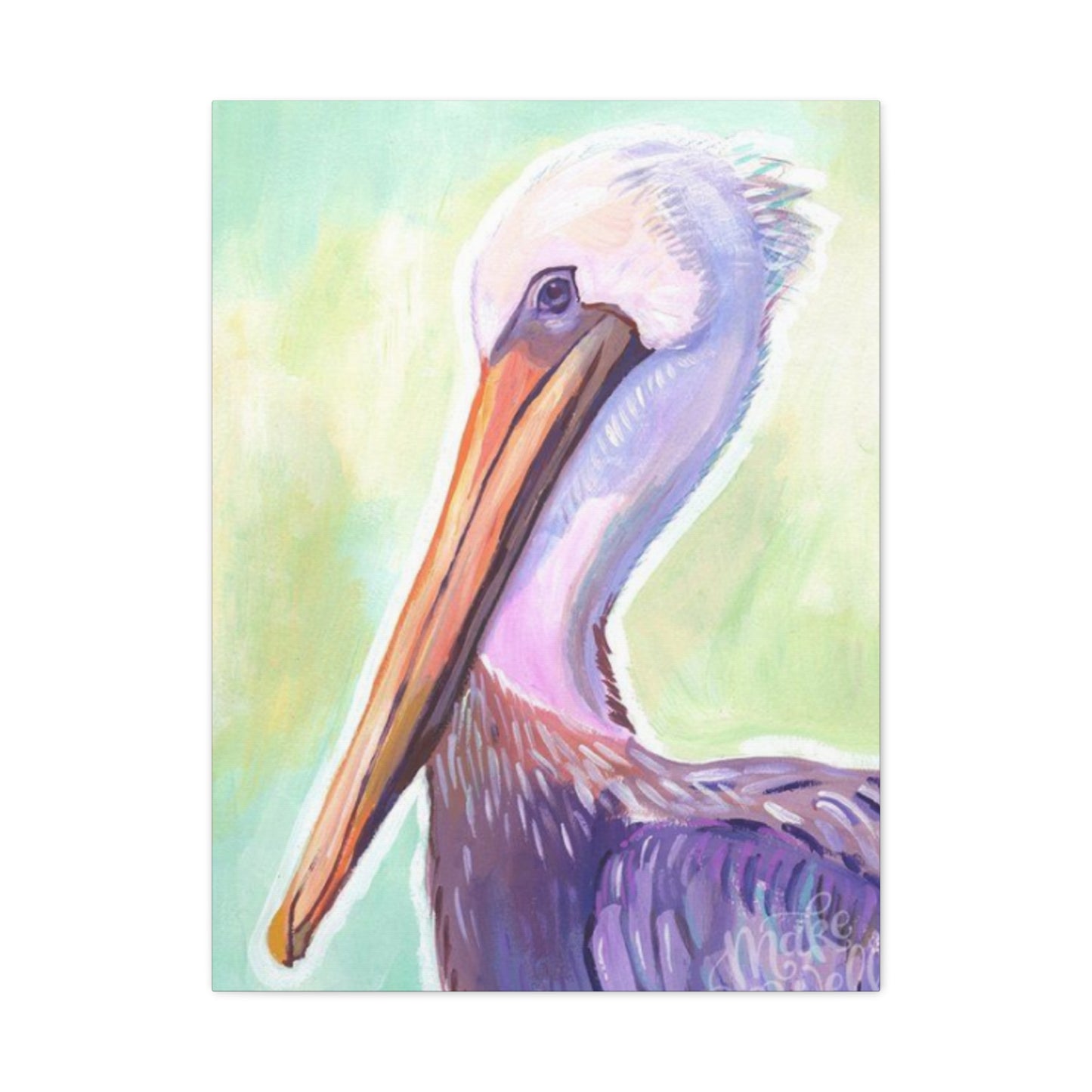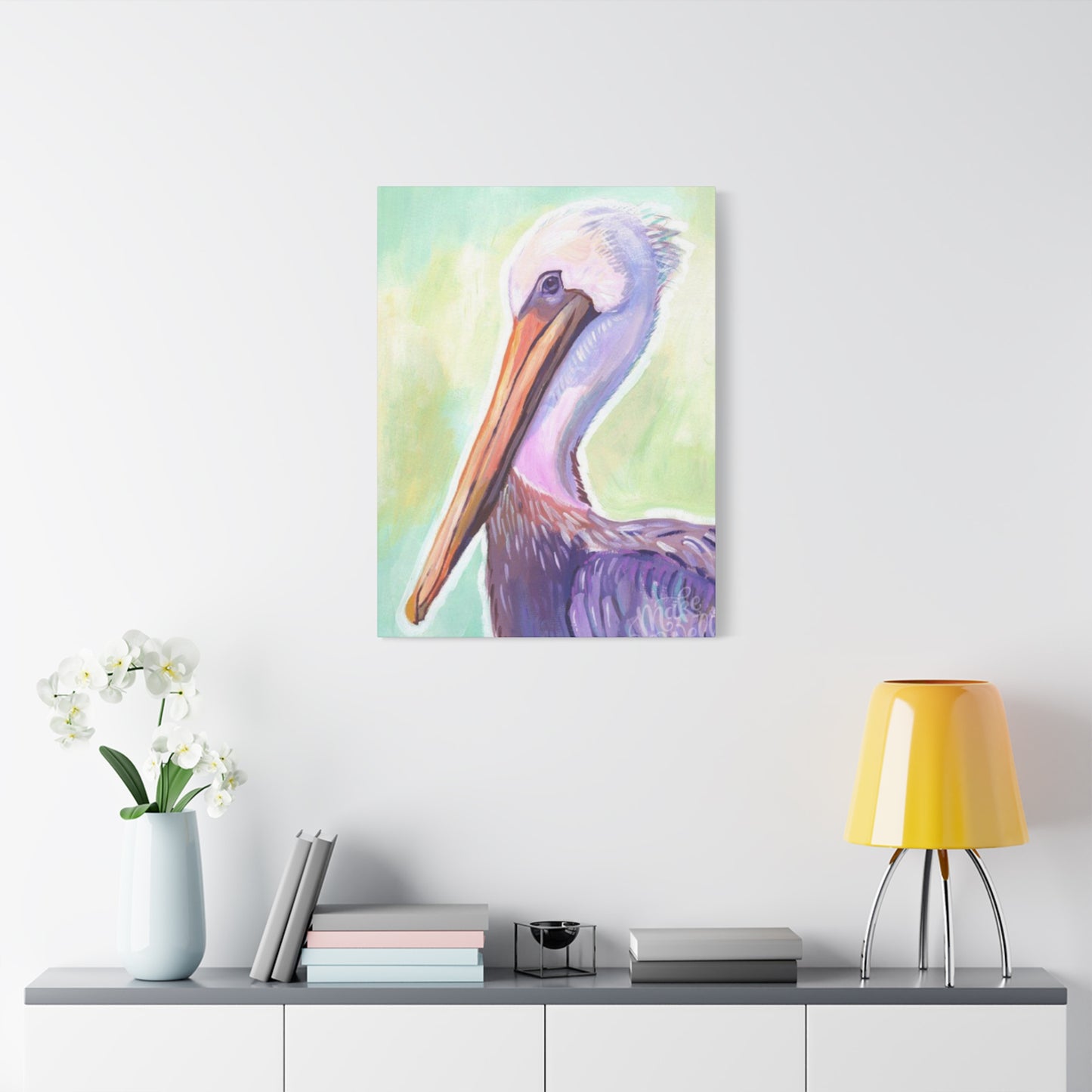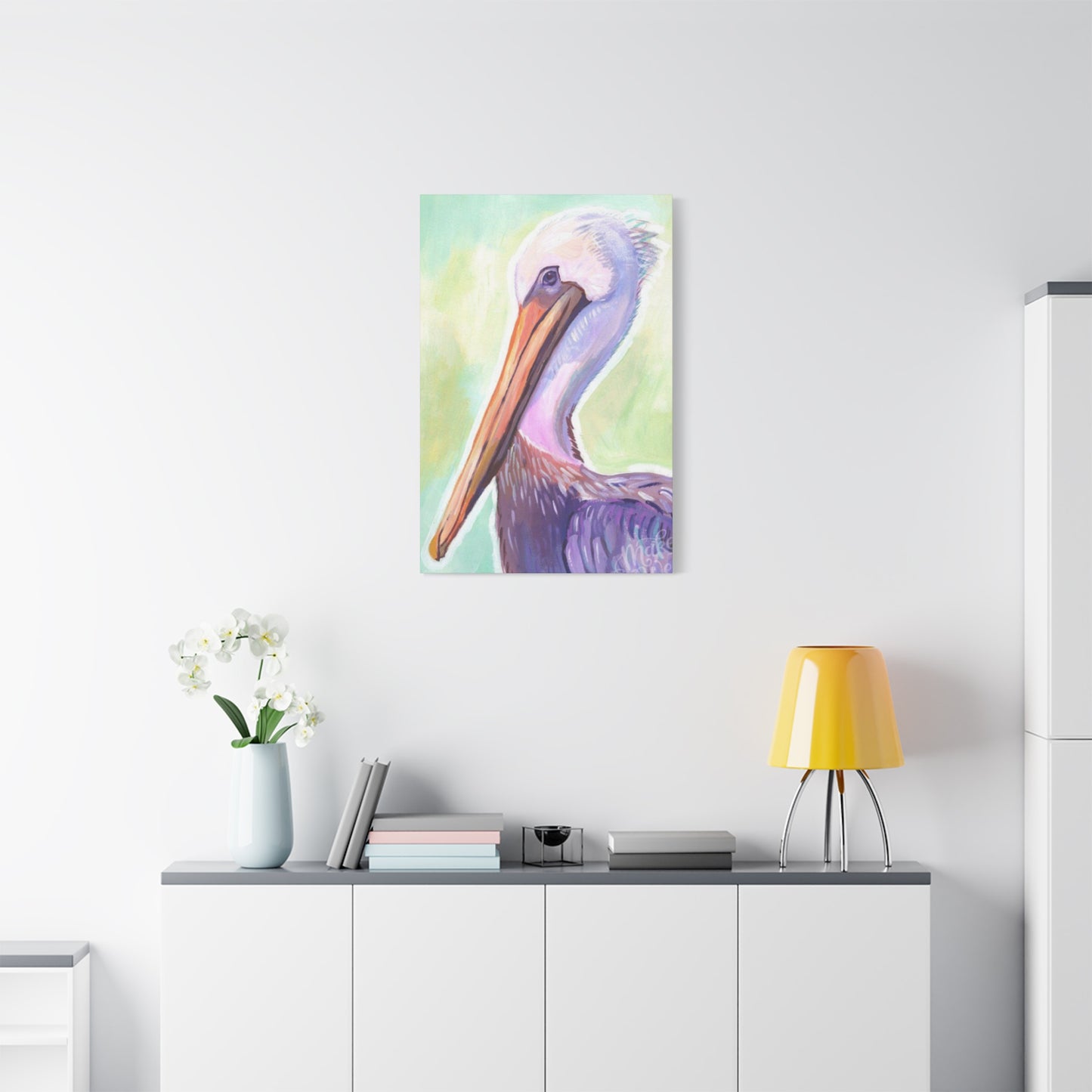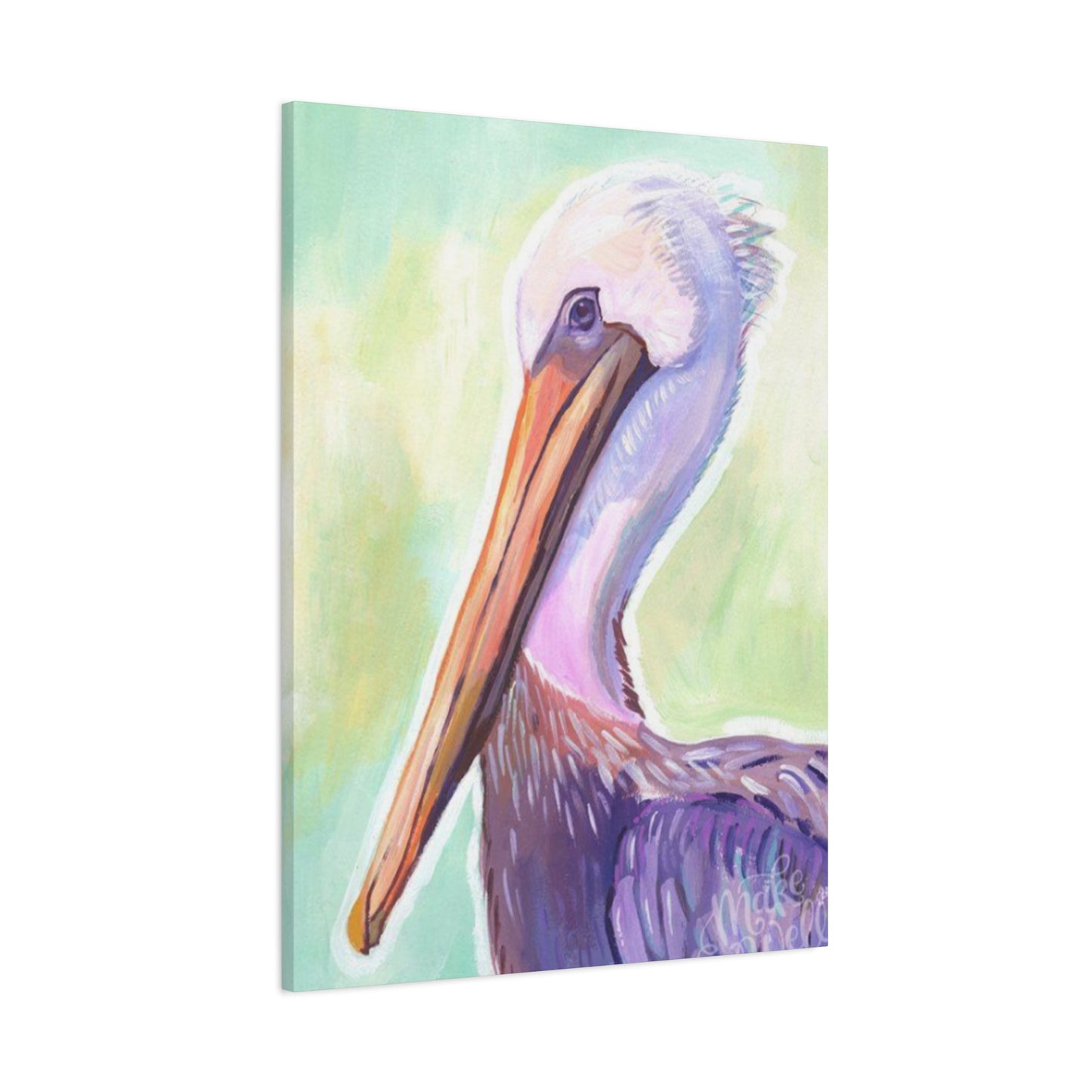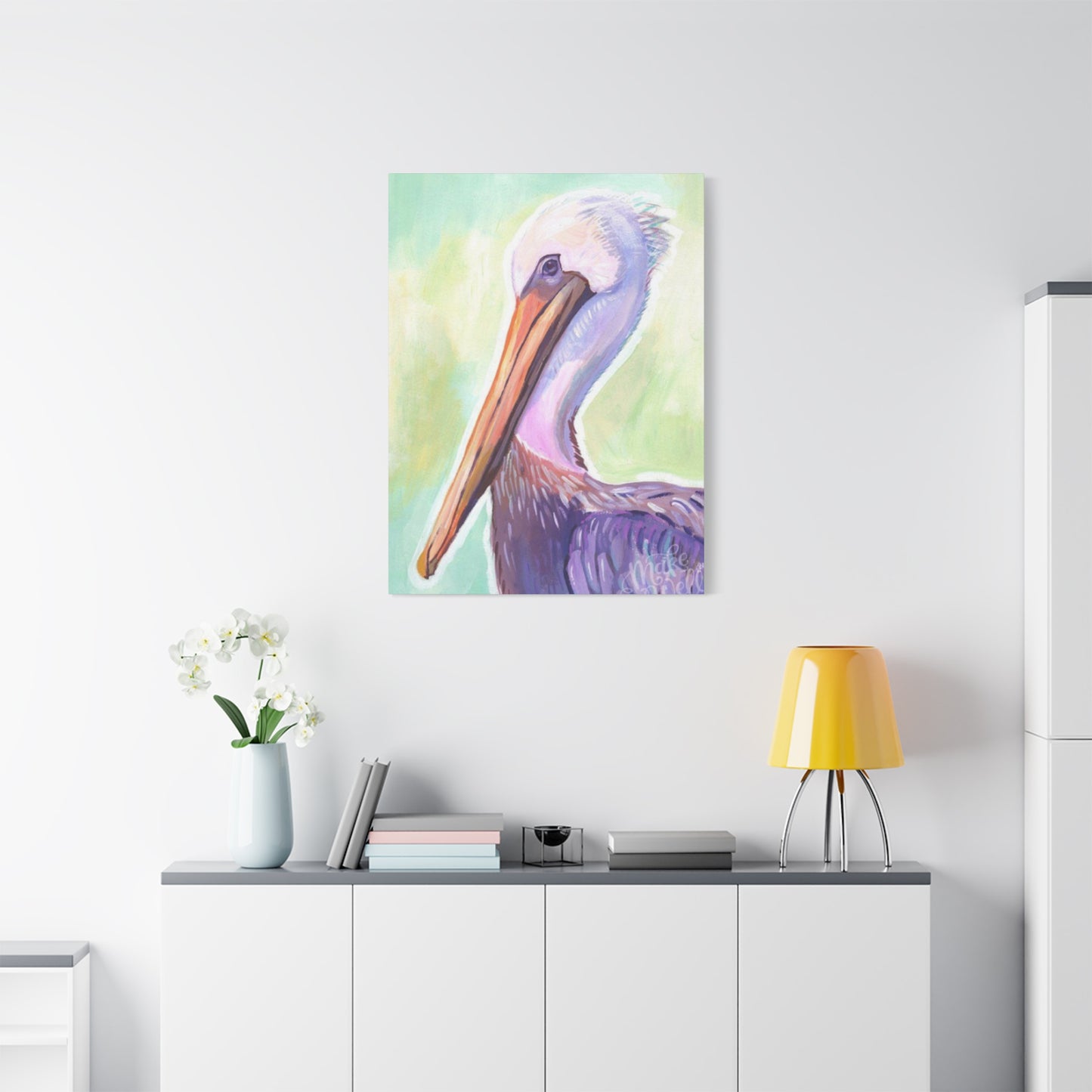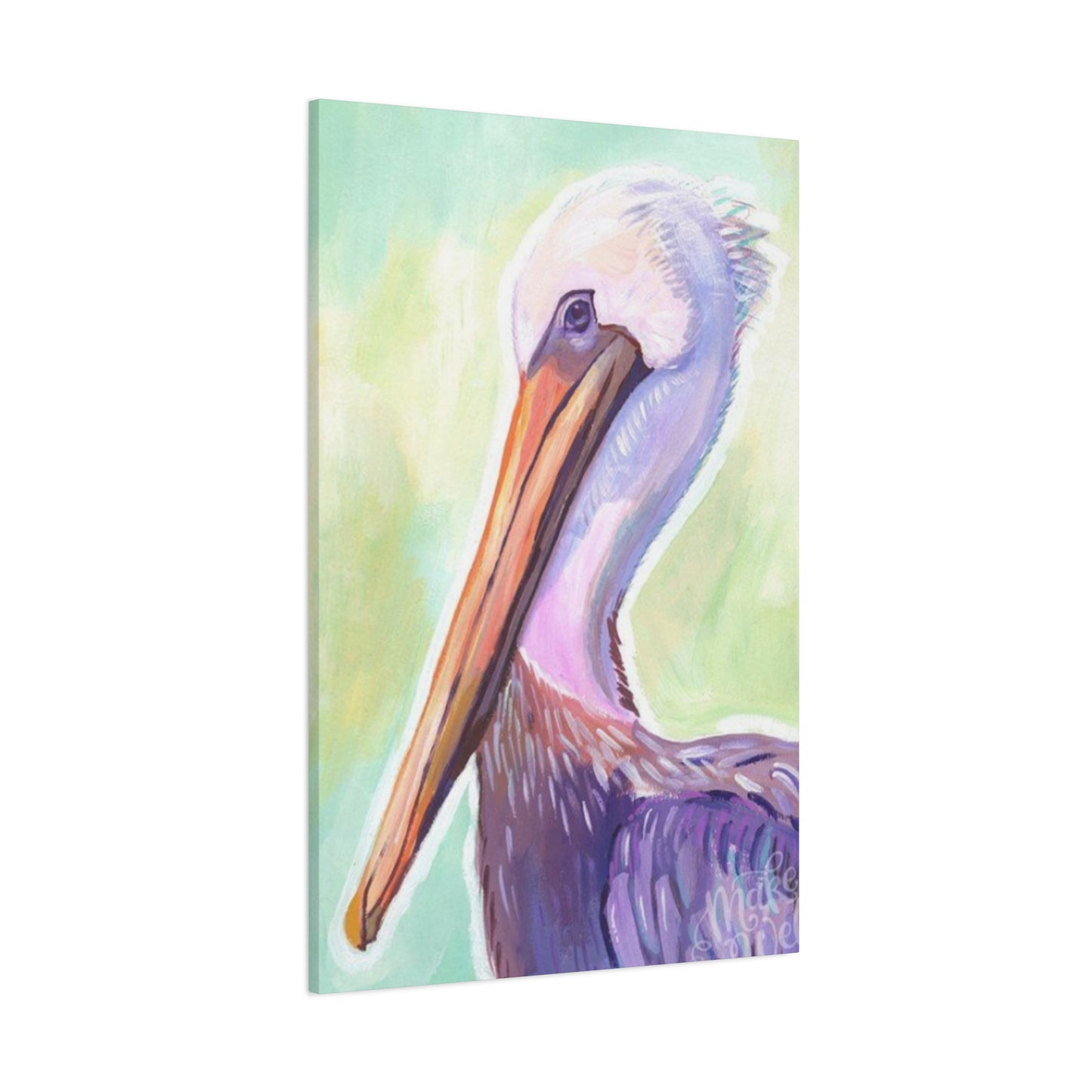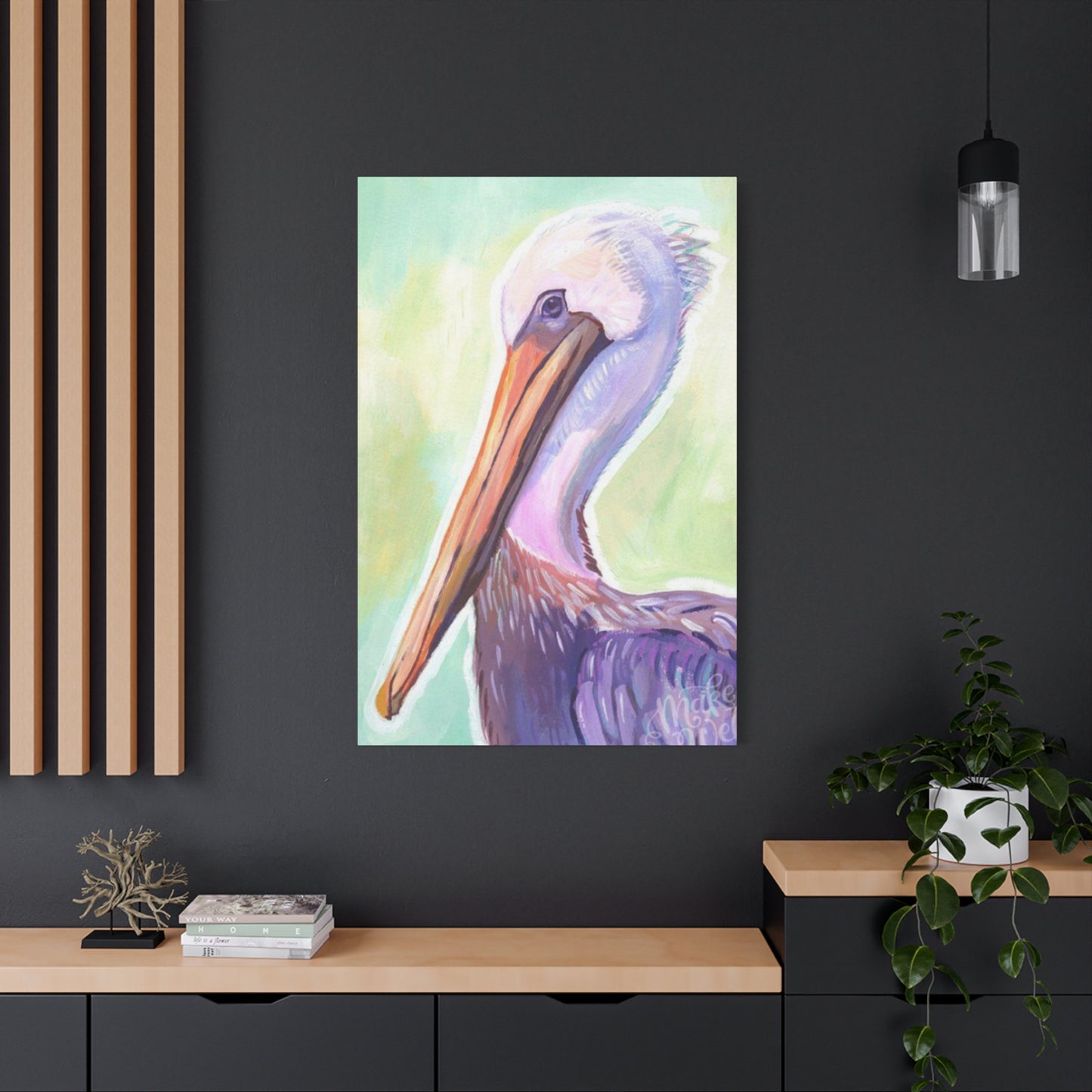The Majestic Enigma: A Comprehensive Exploration of Purple Pelican Painting Wall Art Canvas Prints
The world of interior design and personal expression is a vast ocean of possibilities, where color, form, and subject matter converge to create spaces that resonate with our innermost selves. Within this creative expanse, certain artistic niches emerge that capture the imagination with their unique blend of the familiar and the fantastical. One such captivating subject is the purple pelican painting, a concept that marries the stately grace of a coastal bird with the regal and mystical connotations of the color purple. When translated onto the textured, tangible medium of wall art canvas prints, this artistic vision transforms from a mere idea into a powerful statement piece capable of defining a room's character. This exploration delves deep into every facet of purple pelican painting wall art canvas prints, from the rich symbolism of its components to the practical considerations of selecting and displaying these magnificent works.
We will journey through the history of avian art, the psychology of color, the intricacies of canvas production, and the principles of interior design to provide a truly exhaustive guide. Whether you are an art aficionado, a decorator seeking a unique focal point, or simply someone intrigued by this unusual and beautiful artistic pairing, this guide will illuminate the profound depth and appeal of bringing a purple pelican into your home. It is an invitation to look beyond the conventional and embrace a form of art that is at once serene, majestic, and wonderfully imaginative, offering a portal to a world where nature's elegance meets the boundless creativity of the human spirit.
Unraveling the Symbolism: The Pelican as an Artistic Muse
Throughout human history, certain animals have been elevated beyond their biological existence to become powerful symbols, and the pelican is a prime example. Its distinct form and remarkable behaviors have made it a recurring motif in art, mythology, and religion across diverse cultures. Understanding this rich symbolic history is crucial to appreciating the depth a pelican painting brings to a space. In ancient Egyptian culture, the pelican was associated with death and the afterlife, often depicted in funerary art. Its ability to travel between land, water, and air made it a creature that could traverse different realms, a guide for souls on their journey. Early Christian traditions adopted the pelican as a profound symbol of self-sacrifice and charity.
A widely held belief, documented in medieval bestiaries, was that in times of famine, a mother pelican would pierce her own breast to feed her starving young with her blood. This act of ultimate sacrifice made the pelican a potent allegory for Jesus Christ, representing the Eucharist and the concept of redemption. Consequently, pelican imagery became common in religious art, adorning altars, stained glass windows, and ecclesiastical garments. In heraldry, the pelican in its "vulning" (wounding itself) posture signifies selflessness and devotion. This legacy imbues any artistic representation of a pelican with an undercurrent of nobility, compassion, and resilience. As a subject for a painting, the pelican is not merely a bird; it is a narrative, a vessel of historical and spiritual meaning that adds layers of intellectual and emotional resonance to the artwork.
The Artist's Gaze: Anatomy and Majesty of the Pelican
From a purely artistic standpoint, the pelican presents a compelling subject due to its unique and dramatic anatomy. It is a creature of captivating contrasts. Its large, seemingly cumbersome body is capable of incredible grace and power in flight. An artist has the opportunity to explore the interplay between its grounded, almost prehistoric appearance and its ethereal, soaring silhouette against the sky. The most iconic feature, the gular pouch, is an artistic marvel in itself. It can be depicted as a pendulous, relaxed feature, adding to the bird's serene character, or as a bulging, vibrant net full of fish, symbolizing abundance and success. The texture and form of this pouch offer a fascinating challenge for painters, requiring skillful use of light and shadow to render its leathery, flexible nature. The pelican's long, powerful bill, ending in a sharp hook, adds a touch of formidable wildness to its otherwise gentle demeanor.
Its eyes, often small but piercing, can be rendered to convey wisdom, focus, or a serene watchfulness. The wingspan of a pelican is truly magnificent, and capturing its full, soaring extension on canvas creates an immediate sense of freedom and grandeur. Artists are drawn to the challenge of translating these physical attributes into a compelling visual story. A purple pelican painting, in this context, takes this anatomical fascination and elevates it, using an unnatural color to draw even more attention to the bird's incredible form and texture. The sweep of a wing, the curve of the neck, and the intricate detail of feathers can all be explored and exaggerated through the lens of a vibrant, non-traditional palette, making the viewer see the familiar form in a completely new and exciting light.
A Spectrum of Subjects: Pelican Species and Their Artistic Potential
While we may think of a generic "pelican," there are actually eight distinct species, each offering unique characteristics that can inspire an artist. The American White Pelican, for instance, is a massive bird known for its cooperative fishing techniques and a prominent horn on its bill during breeding season. A painting of this species could focus on themes of community, scale, and the stark beauty of its snowy white plumage, which provides a perfect canvas for washes of purple light at dawn or dusk. In contrast, the Brown Pelican is the quintessential coastal species, famous for its dramatic plunge-diving. Art featuring this bird can be dynamic and action-packed, capturing the explosion of water and the intense focus of the hunt. Its darker, more muted coloration in real life allows an artist to be more liberal and expressive with the application of purple, perhaps using it to highlight the iridescence of its neck feathers or the dramatic shadows cast during a dive.
The Peruvian Pelican, a larger cousin of the Brown Pelican, offers a more robust and powerful silhouette. The Great White Pelican of Europe and Africa, with its sheer size and often pinkish hue, could be artistically rendered in shades of lavender and lilac for a softer, more delicate interpretation. Even the less common species, like the Spot-billed or Dalmatian Pelican, provide unique textures and facial markings for an artist to explore. A series of purple pelican painting wall art canvas prints could even feature different species, creating a cohesive yet varied collection that celebrates the global diversity of this magnificent bird, all unified by the common thread of the imaginative purple color scheme. This approach allows for a deeper appreciation of nature's variety while maintaining a strong, unifying artistic concept.
Legends and Lore: The Pelican in Mythology as an Artistic Source
Beyond established religious symbolism, the pelican populates a rich world of folklore and mythology that provides a fertile ground for artistic inspiration. In various coastal cultures, the pelican is seen as a guardian of the waters and a harbinger of good fishing. A painting could tap into this narrative, depicting a majestic purple pelican not just as a creature, but as a mystical sentinel watching over a shimmering, moonlit sea. This introduces elements of fantasy and magical realism into the artwork. Some indigenous legends portray the pelican as a clever and resourceful trickster, while others see it as a wise elder. An artist could choose to personify the pelican, giving its expression a knowing or mischievous glint, turning the painting from a simple nature scene into a character study.
The very act of choosing to paint a pelican in purple hues aligns with this mythological approach. Purple is a color often associated with magic, mystery, and the supernatural. Therefore, a purple pelican is inherently a creature of myth, a being that exists outside the bounds of the ordinary world. The artwork becomes a portal to a fantastical realm, where the rules of nature are bent to create something more emotionally resonant. The background of such a painting could be equally fantastical—an otherworldly coastal landscape with glowing flora, two moons in the sky, or impossibly vibrant sunsets. By drawing on these mythological archetypes, a purple pelican painting transcends mere decoration and becomes a piece of narrative art, inviting the viewer to imagine the story behind this enigmatic and magical creature.
Capturing Motion and Stillness: Pelican Behavior on Canvas
The behavioral repertoire of the pelican offers a wealth of dynamic and serene scenes for an artist to capture. The dichotomy between its powerful activity and its placid repose is a central theme that can be explored in a purple pelican painting. Consider the explosive energy of a flock of pelicans taking off from the water. This is a moment of chaos and synchronized power, with wings beating, water spraying, and bodies launching into the air. An artist could use bold, expressive brushstrokes and a vibrant purple palette to convey this raw energy, making the canvas thrum with life and motion. The aforementioned plunge-dive of the Brown Pelican is another moment of peak action—a streamlined arrow of intent, hurtling towards its prey. This subject allows for a study in speed, focus, and the dramatic interaction between the bird and its environment.
Conversely, the pelican is often a symbol of profound tranquility. A painting could depict a solitary pelican perched on a weathered pier post at sunset. Here, the mood is one of contemplation and peace. The artist might use softer, blended shades of purple, mauve, and lavender to capture the fading light and the quiet stillness of the moment. The focus would shift from action to atmosphere. Another common sight is a group of pelicans gliding effortlessly in single file, low over the waves. This image evokes a sense of journey, harmony, and effortless grace. Rendering this scene with purple pelicans against a contrasting sea of teal or orange would create a visually stunning and emotionally calming piece. By choosing to depict a specific behavior, the artist sets the entire mood of the painting, allowing the purple pelican wall art to be either a source of dynamic energy or a sanctuary of calm within a room.
Purple in the Natural World: An Anchor in Reality
While a purple pelican is a work of fantasy, the color purple is very much present in the natural world, and this connection provides a subtle anchor that keeps the artwork from feeling entirely alien. By observing where purple appears in nature, we can better understand how to integrate a purple-themed artwork into our homes. Purple is abundant in the floral kingdom, from the delicate petals of irises, crocuses, and wisteria to the rich hues of lavender fields and pansies. This association imbues the color with a sense of natural beauty, growth, and vitality. In the animal kingdom, purple is rarer but can be found in the iridescent sheen of a starling's feathers, the vibrant skin of certain tropical frogs, or the deep colors of marine life like sea urchins and nudibranchs. Perhaps most powerfully, purple is a key component of the sky during the transitional moments of dawn and dusk.
The "purple hour" is a time of breathtaking beauty and tranquility, a magical period when the world is bathed in soft, ethereal light. A purple pelican painting can echo these natural phenomena. The purple of the bird can be seen as a reflection of a twilight sky, connecting the fantastical creature to a real and universally admired moment of natural beauty. This link to the real world makes the imaginary subject more plausible and emotionally resonant. When we see a purple pelican on a canvas, our mind can subconsciously connect it to the purple of a flower, the shimmer of a shell, or the glow of a sunset, making the art feel both imaginative and strangely familiar. This grounding in natural aesthetics is key to the artwork's success, allowing it to be both a flight of fancy and a celebration of the colors found in our own world.
Harmonizing Hues: Pairing Purple with Other Colors in Decor
A key consideration when introducing a significant piece of art like a purple pelican canvas print into a room is how its dominant color will interact with the existing or planned color palette. Purple, while strong, is a surprisingly versatile team player. Its effectiveness is magnified when paired thoughtfully with other hues. For a classic and sophisticated look, purple can be paired with neutral colors. A deep plum or eggplant purple pelican will stand out dramatically against walls of soft grey, beige, or off-white. This allows the artwork to be the undisputed star of the room without overwhelming the space. Metallic accents like gold, brass, or silver work beautifully with purple, enhancing its luxurious and regal connotations. A gold frame on the canvas or brass lighting fixtures nearby can create a cohesive and elegant design story. For a more vibrant and energetic scheme, purple can be paired with its complementary color, yellow.
A splash of mustard yellow in throw pillows or a nearby vase can make the purple in the painting appear even richer and more dynamic. This high-contrast pairing is bold and confident. Analogous color schemes, which use colors next to purple on the color wheel, create a more serene and harmonious effect. Pairing a purple pelican painting with shades of blue and pink or fuchsia creates a rich, layered, and visually soothing environment. For a natural, earthy feel, purple can be combined with deep greens and rich browns. This palette evokes a sense of a mystical forest or a lush, tropical landscape, which can be a wonderful thematic extension of the wildlife subject matter. Ultimately, the colors chosen to accompany the purple pelican art will define its role in the room—whether it's a calming influence, a dramatic statement, or a harmonious part of a larger, colorful tapestry.
Exploring the Spectrum: Shades of Majesty in Purple Art
The term "purple" encompasses a vast and nuanced range of shades, each with its own distinct personality and emotional impact. An artist creating a purple pelican painting has this entire spectrum at their disposal, and their choice of specific shades is fundamental to the artwork's final character. Lighter shades like lavender and lilac are soft, gentle, and often associated with femininity, nostalgia, and springtime. A pelican rendered in these pale tones would feel delicate, dreamy, and ethereal. Such a piece would be perfect for creating a light, airy, and romantic atmosphere in a bedroom or a sunroom. Moving into the mid-tones, we find shades like amethyst and mauve. These colors are richer and more complex, balancing tranquility with a hint of sophistication.
An amethyst pelican would feel spiritual and calming, reminiscent of the healing crystal it's named after. Mauve, with its slightly dusty, greyish undertone, has a vintage and contemplative quality. The deep end of the spectrum is where purple reveals its full power and drama. Shades like violet, indigo, and eggplant are bold, luxurious, and mysterious. A deep violet pelican would be a powerful, commanding presence on a wall, radiating creativity and confidence. Indigo, sitting on the cusp of blue, evokes a sense of cosmic wonder and deep introspection. An eggplant-purple pelican, with its dark, earthy tones, would feel grounded, stable, and incredibly sophisticated. Often, the most compelling purple pelican paintings will use a combination of these shades, employing deep violets for shadows, mid-tone purples for the body, and pale lilac for highlights, creating a work of art with incredible depth, dimension, and visual interest.
The Mystical and Spiritual Dimensions of Purple
Throughout history and across various spiritual traditions, purple has been considered the color of the highest consciousness and spiritual attainment. It is associated with the crown chakra, the energy center at the top of the head that connects us to higher states of awareness, intuition, and the divine. This spiritual dimension adds another profound layer of meaning to a purple pelican painting. By choosing this color, the artist elevates the pelican from a mere animal to a spiritual totem or guide. The artwork becomes more than just a decorative object; it can be seen as a focal point for meditation, a reminder of the unseen worlds, or a symbol of personal transformation. The combination of the pelican's symbolism of sacrifice and rebirth with purple's connection to spiritual wisdom creates a uniquely powerful piece.
It speaks to the journey of the soul, the idea of transcending the mundane to reach a higher understanding. In a home, such an artwork can contribute to a sense of peace, purpose, and contemplation. It encourages the viewer to look beyond the surface and connect with their own intuition and inner wisdom. The fantastical nature of a purple pelican reinforces this mystical quality. It is a creature not of this world, suggesting that it comes from a place of dreams, visions, and higher consciousness. For individuals who practice meditation, yoga, or other spiritual disciplines, a purple pelican canvas print can be a meaningful and inspiring addition to their sacred space, serving as a visual anchor for their journey inward and upward.
The Intersection of Real and Surreal: Conceptualizing the Purple Pelican
The very concept of a "purple pelican" exists at a fascinating intersection of realism and surrealism. The pelican itself is a real, recognizable creature, grounded in the natural world. Its form, behavior, and habitat are familiar to us. The "purple" element is the injection of the surreal, the touch of fantasy that lifts the subject out of the ordinary and places it into the realm of the imagination. This duality is what makes the artwork so compelling. It is not so strange that it becomes unrecognizable, nor so ordinary that it becomes uninteresting. This artistic choice aligns with the principles of magical realism, a style where magical or fantastical elements are presented in an otherwise realistic setting. The purple pelican could be the sole fantastical element in a hyper-realistic seascape, making its appearance all the more striking and thought-provoking.
Why is the pelican purple? The artwork doesn't provide a literal answer, but instead invites the viewer to create their own narrative. Is it a creature from another dimension? Is it a reflection of a magical sunset? Is it a symbolic representation of the bird's spirit? This ambiguity is a strength, as it makes the art interactive and deeply personal. It sparks curiosity and wonder, encouraging a more engaged viewing experience than a straightforward wildlife painting might. The artist's challenge and opportunity lie in balancing these two elements. The pelican's anatomy must be rendered with enough accuracy to be believable, while the application of the purple color must be confident and intentional, making it clear that this is a deliberate artistic choice, not a mistake. The result is a piece that feels both grounded and transcendent, a perfect blend of the world we know and the worlds we can only dream of.
Abstract Visions: Deconstructing the Purple Pelican Form
While a realistic or surreal depiction of a purple pelican is a powerful option, the subject also lends itself beautifully to abstract interpretation. Abstraction is about moving beyond literal representation to capture the essence, emotion, or energy of a subject through color, shape, and form. An abstract purple pelican painting might not feature a clearly discernible bird at all. Instead, it could focus on the key elements associated with it. The sweeping curve of a wing could be translated into a bold, purple arc across the canvas. The idea of a plunge-dive could be represented by a dynamic cascade of violet and white shapes. The texture of feathers might be suggested through thick, impasto paint application or intricate, layered brushwork.
The color purple itself would become a primary subject, with the artist exploring its various shades and its interaction with other colors to evoke the feeling of a majestic coastal bird without explicitly drawing one. The title of the piece might be the only clue that a pelican was the original inspiration. This approach allows for a more emotional and visceral connection to the artwork. The viewer is not just looking at a pelican; they are experiencing the concepts of flight, grace, power, and serenity. An abstract purple pelican canvas print is an excellent choice for modern, minimalist, or contemporary interiors, where a focus on color and form is often preferred over literal imagery. It becomes a sophisticated conversation piece, a puzzle of color and emotion that can be interpreted in countless ways, ensuring that it remains visually engaging and thought-provoking for years to come.
The Fleeting Moment: Impressionistic Takes on the Purple Pelican
Impressionism, the 19th-century art movement that revolutionized painting, offers another compelling stylistic avenue for a purple pelican painting. The focus of Impressionism is not on precise detail, but on capturing the fleeting sensory effect of a moment—specifically, the way light interacts with surfaces. An impressionistic purple pelican would be rendered with visible, often thick, brushstrokes, and a focus on the overall feeling rather than sharp, clear lines. The artist would be less concerned with painting every single feather and more interested in how the purple plumage catches the glint of the sun or reflects in the shimmering water. The boundaries between the pelican and its environment might become soft and blurred, suggesting a sense of atmospheric unity. For example, the purple of the pelican could bleed into the lilacs and mauves of a sunset sky, making the bird seem like a natural extension of the twilight hour.
The water might be depicted with a mosaic of blue, green, and purple dabs of paint, conveying the constant motion and reflection of light on the surface. This style imbues the artwork with a sense of life, movement, and spontaneity. It feels less like a static portrait and more like a captured memory, a glimpse of a beautiful scene that is alive and changing. An impressionistic purple pelican painting wall art canvas print can bring a soft, vibrant energy to a room. It pairs well with both traditional and transitional decor styles, offering a touch of classic artistry combined with a fresh and lively color palette. It celebrates the beauty of light and color, making it a joyful and uplifting addition to any space.
Realism with a Fantastical Twist: The Hyper-Realistic Purple Pelican
At the opposite end of the spectrum from abstraction lies hyper-realism, a style that aims to create a painting that is as detailed and convincing as a high-resolution photograph. Applying this technique to a fantastical subject like a purple pelican creates a fascinating and powerful artistic statement. A hyper-realistic purple pelican painting would be a masterpiece of technical skill. The artist would meticulously render every detail: the intricate barbules of each feather, the subtle texture of the gular pouch, the glint of light in the eye, and the tiny water droplets clinging to the plumage. The challenge lies in making the impossible seem real. The purple coloring would not be a flat wash; it would be a complex tapestry of countless shades, from the deepest indigo in the shadows to the palest lavender on the sun-kissed highlights.
The artist would have to convincingly portray how purple feathers would interact with natural light, how they would reflect color onto nearby surfaces, and how their texture would appear up close. The effect on the viewer is one of awe and wonder. The brain registers the image as real due to the incredible level of detail, but simultaneously recognizes that the subject matter is impossible. This cognitive dissonance is captivating. It forces the viewer to suspend their disbelief and fully immerse themselves in the artist's imaginative world. A hyper-realistic purple pelican canvas print is a bold and dramatic statement piece. It showcases exceptional artistic talent and serves as a constant source of fascination, as viewers can spend hours discovering new details within the intricate and flawlessly executed artwork.
The Purple Pelican in Modern and Contemporary Art Styles
Beyond traditional styles like realism and impressionism, the concept of a purple pelican can be explored through a variety of modern and contemporary artistic lenses. Each style offers a unique way to interpret this imaginative subject, catering to different tastes and interior design aesthetics. A Cubist approach, for example, would deconstruct the pelican into geometric shapes and planes, showing the bird from multiple viewpoints simultaneously. This would emphasize its form and structure in a highly analytical and abstract way, using shades of purple to define the different facets. A Surrealist painting, in the vein of Salvador Dalí, might place a perfectly rendered purple pelican in a bizarre, dreamlike landscape, perhaps alongside melting clocks or floating objects, using the bird as a symbol within a larger, mysterious narrative.
Pop Art, with its bold colors and graphic sensibility, could feature a purple pelican in a repeated pattern or as a single, iconic image with strong outlines, similar to an Andy Warhol screen print. This would create a playful, vibrant, and highly decorative piece. Minimalism might reduce the pelican to its most essential lines and shapes—a simple purple silhouette against a stark, neutral background. This approach would focus on the purity of form and color, creating a serene and sophisticated artwork. A street art or graffiti-inspired style could use stencils, spray paint effects, and dynamic lettering to create an edgy, urban interpretation of the purple pelican. By embracing these diverse contemporary styles, artists can ensure that the purple pelican remains a relevant and exciting subject, capable of fitting into the most cutting-edge interior designs and appealing to a wide range of modern art lovers.
A Legacy Medium: The Evolution of Canvas as an Artistic Surface
The choice of canvas as the medium for a purple pelican painting is a decision steeped in art history. For centuries, canvas has been the preferred surface for serious painting, and for good reason. Before the 15th century, artists primarily used rigid wooden panels. However, these were heavy, prone to cracking, and limited in size. The adoption of stretched canvas, initially by Venetian painters who needed durable art for their humid climate, was a revolutionary development. Canvas, typically made from linen or cotton, was lightweight, portable, and could be stretched to enormous sizes, allowing for the creation of grand, monumental works. It also had a unique texture, known as the "tooth" of the canvas, which interacted with the paint in a way that wood could not. This texture could be used by artists to create different effects, from smooth, blended glazes to thick, expressive impasto.
The flexibility of the surface also allowed the paint to age without cracking as severely as it would on a rigid panel. When you choose a purple pelican painting on a canvas print, you are participating in this rich legacy. The textured surface of the canvas adds a tangible depth and a sense of authenticity to the artwork, even in its printed form. It connects the modern digital reproduction to the centuries-old tradition of oil and acrylic painting. This physical quality distinguishes a canvas print from a simple paper poster, giving it more weight, presence, and a feeling of being a "real" piece of art. The canvas itself becomes part of the aesthetic experience, its woven texture subtly catching the light and enhancing the visual richness of the purple pelican image.
The Pinnacle of Reproduction: Understanding Giclée Printing
When discussing modern wall art canvas prints, the term "Giclée" is often used to signify the highest level of quality. Giclée (pronounced "zhee-clay") is a French term meaning "to spray," which refers to the process by which the ink is applied to the canvas. Unlike standard inkjet printers, Giclée printers use a much finer and more numerous set of nozzles to spray microscopic droplets of ink. This allows for a far greater resolution and a much wider range of colors than traditional printing methods. A key feature of Giclée printing is the use of high-quality, archival pigment-based inks rather than standard dye-based inks. Pigment-based inks consist of solid particles of color suspended in a liquid carrier. These particles are much more resistant to fading over time, especially when exposed to ultraviolet light.
A true Giclée print, made with archival inks on acid-free archival canvas, can last for over 100 years without any significant color degradation. This is crucial for a piece of art like a purple pelican painting, where the vibrancy and nuanced shades of purple are central to its appeal. A Giclée print ensures that the deep violets, soft lavenders, and rich amethysts will remain true to the artist's original vision for generations. When you invest in a Giclée canvas print, you are not just buying a decoration; you are acquiring a fine art reproduction designed for longevity. The resulting print has a stunning level of detail, smooth color gradients, and a richness that is as close as possible to the original painting, ensuring that the majesty of the purple pelican is rendered with the quality and permanence it deserves.
Coastal and Nautical Themes: A Natural Harmony
Purple pelican painting wall art canvas prints find a natural and harmonious home within coastal and nautical interior design themes. These styles are all about evoking the feeling of being by the sea, using a palette of blues, whites, and sandy neutrals, along with natural textures like wood, jute, and linen. While a purple pelican is a fantastical element, it complements this aesthetic beautifully. The pelican itself is an iconic symbol of the coast, immediately reinforcing the theme. The color purple, especially in its softer lavender and indigo shades, pairs wonderfully with the traditional coastal palette. It can be seen as an artistic interpretation of the colors of a seaside sunset or the deep hues of the ocean.
In a room with white shiplap walls, a light wood floor, and blue and white striped textiles, a purple pelican canvas adds a sophisticated and unexpected pop of color. It prevents the theme from becoming too predictable or kitschy. It elevates the space from a simple beach house look to a more artistic and imaginative coastal retreat. The artwork can be complemented with other subtle purple accents—a throw pillow, a glass vase, or even fresh flowers—to create a cohesive look. The key is to let the pelican painting be the main fantastical element, while keeping the rest of the decor grounded in the natural textures and colors of the coast. This balance creates a space that is both relaxing and visually intriguing, a perfect tribute to the magic and majesty of the shoreline.
A Pop of Color: Pelican Art in Minimalist and Modern Spaces
At first glance, a fantastical purple pelican might seem at odds with the clean lines and restrained palettes of minimalist and modern design. However, it can actually be the perfect element to bring personality and warmth to these often-austere spaces. Minimalism is not about the absence of decoration, but about the intentional choice of every object. A single, stunning piece of art is often the only decorative element needed. In a room with white walls, simple furniture, and a focus on form and function, a purple pelican canvas print can serve as a powerful and solitary focal point. Its vibrant color provides a necessary contrast to the neutral surroundings, preventing the space from feeling cold or sterile.
Its organic, natural subject matter offers a welcome softness and a connection to the outside world, balancing the hard edges and geometric forms of modern furniture. The key is in the presentation. A gallery-wrapped canvas with its clean, frame-less edges is ideal for this aesthetic. The artwork should be given plenty of "breathing room" on the wall, with no other competing decorations nearby. This allows the eye to be drawn directly to the art, appreciating its color and form without distraction. In a modern space, a more abstract or minimalist interpretation of the purple pelican could be particularly effective. It becomes less about the bird itself and more about the interplay of color and shape, a piece of pure visual poetry that complements the intellectual and artistic sensibilities of modern design.
Bohemian and Eclectic Homes: The Perfect Canvas for a Purple Pelican
If minimalist design is about careful restraint, bohemian and eclectic styles are about joyful abundance, self-expression, and the mixing of different cultures, eras, and styles. These are the interiors where a purple pelican painting can truly feel at home, surrounded by other unique and personal treasures. In a bohemian-styled room, characterized by rich textures, layered textiles, a profusion of plants, and a collection of objects from travels and flea markets, the purple pelican fits right in. Its mystical and spiritual connotations resonate with the free-spirited and often esoteric nature of boho design. The rich purple color can be a luxurious addition to a palette of jewel tones like emerald green, sapphire blue, and ruby red. In an eclectic space, the principle is to mix and match with confidence.
A hyper-realistic purple pelican might be hung on a wall next to a vintage movie poster and an abstract sculpture. The pelican art acts as a "thread" of the unexpected, a whimsical element that helps to tie together other disparate pieces. The key to successful eclectic design is finding commonalities, whether in color, shape, or theme. The purple of the pelican might be picked up in a patterned rug or a velvet armchair across the room. The coastal theme could be subtly referenced with a piece of driftwood on a shelf or a collection of seashells in a bowl. In these vibrant, personal, and curated spaces, the purple pelican is not just a piece of art; it is a character, a piece of the homeowner's unique story, contributing to a rich and layered interior that is full of life and personality.
Illuminating Your Art: Best Practices for Proper Lighting
Proper lighting can make the difference between a piece of art that simply hangs on a wall and one that truly comes to life. The wrong lighting can wash out colors, create glare, or leave the artwork in shadow. When lighting your purple pelican canvas print, the goal is to provide even, consistent illumination that reveals the true colors and details of the piece. The best option is often a dedicated picture light, which is a fixture mounted on the wall or the frame itself, designed to cast light directly onto the artwork. LED lights are an excellent choice as they produce very little heat and no UV radiation, making them safe for the artwork. The light should be positioned at approximately a 30-degree angle to the canvas.
This angle is steep enough to avoid casting a shadow of the viewer onto the art, but not so steep that it creates a distracting glare or "hot spot" on the surface. Track lighting is another flexible option. Multiple fixtures can be aimed at the artwork from the ceiling, allowing you to adjust the position and intensity of the light. It's best to use at least two track lights to "wash" the canvas in light from different angles, which minimizes shadows and ensures even coverage. As for the quality of the light itself, look for bulbs with a high Color Rendering Index (CRI). A CRI of 90 or above will ensure that the colors of the artwork, especially the complex shades of purple, are rendered accurately and vibrantly. By investing in good lighting, you are ensuring that your purple pelican painting can be appreciated to its fullest, becoming a luminous and captivating feature in your home, day or night.
Creating a Cohesive Look: Complementary Decor for Your Pelican Canvas
A piece of statement art like a purple pelican painting should not exist in isolation. Its impact is magnified when it is thoughtfully integrated with the surrounding decor. The goal is to create a cohesive look where the artwork feels like a natural and intentional part of a larger design story. One of the easiest ways to do this is through color. Pick one or two of the specific shades of purple from the painting and repeat them in smaller doses throughout the room. This could be in the form of throw pillows, a decorative vase, a rug pattern, or even the spines of books on a coffee table. This creates a visual thread that leads the eye around the space and connects the decor back to the focal artwork.
Texture is another powerful tool. If the painting has a coastal theme, you can introduce complementary textures like weathered wood in a picture frame or side table, the rough weave of a jute rug, or the smooth surface of sea glass in a decorative bowl. These textural echoes create a more immersive and sensory experience. The theme of the artwork can also be subtly referenced. Beyond the obvious coastal motifs, you could play on the "majestic" or "royal" feel of the purple pelican by incorporating a few luxurious elements like a velvet cushion or a single metallic accent. The key is subtlety. You don't want to create a heavy-handed, overly themed room. Instead, you want to create a series of gentle echoes and resonances that make the entire space feel harmonious, curated, and deeply connected to the beautiful piece of art on your wall.
A Room-by-Room Guide: Placing Your Purple Pelican Art
The versatile nature of purple pelican art allows it to be placed effectively in almost any room of the house, with each location offering a unique opportunity to shape the room's atmosphere. In the living room, a large canvas above the sofa or mantelpiece serves as a primary focal point and a conversation starter. It sets a tone of creative sophistication for the main gathering space in your home. In a dining room, the artwork can create an elegant and imaginative backdrop for entertaining. A deep, rich purple pelican can add a sense of drama and formality, while a lighter, more impressionistic piece can create a relaxed and inviting atmosphere. In a home office, a purple pelican painting can be a source of inspiration.
Purple is the color of creativity and wisdom, and the image of a soaring bird can evoke feelings of freedom and ambition. It’s a perfect visual motivator for a workspace. In a bedroom, the goal is often to create a tranquil retreat. A pelican rendered in soft lavenders and mauves, perhaps depicted in a serene, resting pose, can contribute to a peaceful and dreamy ambiance, helping to create a sanctuary for rest and relaxation. Even in a spacious entryway or a long hallway, a purple pelican canvas can make a powerful first impression, introducing guests to your unique style and personality the moment they walk through the door. By considering the primary function and desired mood of each room, you can strategically place your artwork to maximize its aesthetic and emotional impact throughout your home.
Conclusion:
Our comprehensive journey through the world of purple pelican painting wall art canvas prints has revealed an art form that is far more than a simple decorative choice. It is a confluence of rich symbolism, psychological depth, artistic innovation, and technical craftsmanship. We began by exploring the pelican itself, a creature revered across cultures as a symbol of sacrifice, nobility, and serene strength. We then delved into the profound history and psychology of the color purple, a hue that has forever signified royalty, mystery, creativity, and spiritual attainment. The fusion of these two powerful elements creates a subject that is at once grounded in the majesty of the natural world and elevated into the realm of the fantastical. This artwork is not just a picture of a bird; it is a narrative, a piece of magical realism that invites wonder and personal interpretation.
We have seen how this captivating subject can be rendered in a multitude of artistic styles, from the meticulous detail of hyper-realism and the light-filled energy of impressionism to the bold, deconstructed forms of abstraction. Each style offers a different lens through which to view this enigmatic creature, ensuring there is a purple pelican to suit every aesthetic, from the most traditional to the unapologetically modern. Furthermore, we examined the tangible medium of the canvas print, understanding that the quality of the materials—the archival inks, the protective coatings, the durable poly-cotton canvas, and the warp-resistant stretcher bars—is what transforms a beautiful image into a lasting piece of fine art for the home. A well-crafted Giclée canvas print is an investment in durable beauty, designed to retain its vibrancy and structural integrity for generations.
Finally, we navigated the practical application of this art within our living spaces. We learned the principles of sizing and lighting, and how to use a purple pelican painting to anchor a room's design, whether it be a coastal retreat, a minimalist sanctuary, or an eclectic haven. This art has the power to serve as a dramatic focal point, to introduce a transformative pop of color, and to create a specific, desired mood, from tranquility to vibrant energy. By thoughtfully integrating this art with complementary colors and textures, it becomes the heart of a cohesive and deeply personal interior design. The purple pelican is a testament to the power of imagination—a symbol of how art can take the familiar and make it new, exciting, and full of meaning. Choosing to hang a purple pelican painting on your wall is an embrace of the unique, a celebration of creativity, and an invitation to bring a touch of majesty and magic into your everyday life. It is a statement that your home is not just a place to live, but a canvas for your own personal story.

















